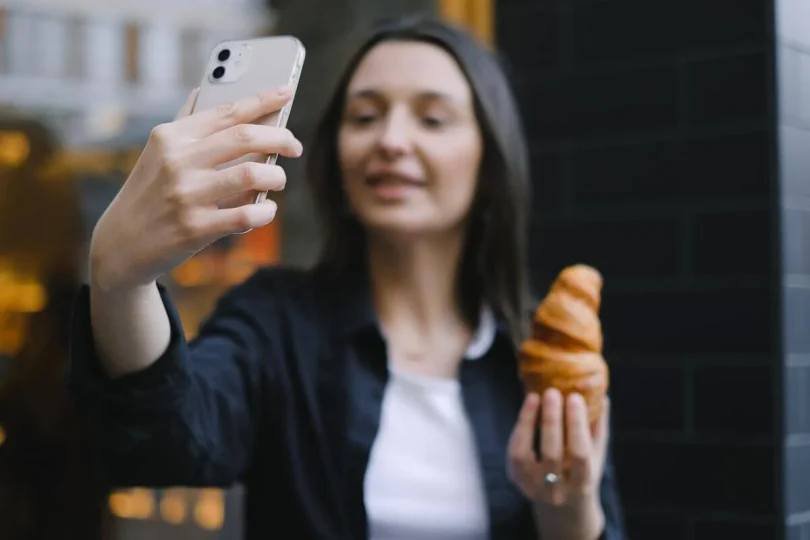In the age of social media, influencers have become the new celebrities. With millions of followers hanging onto their every post, these digital stars wield significant power over trends, consumer behavior, and even public opinion. However, as the influencer industry continues to grow, so does the phenomenon of “influencers gone wild.” This term refers to the increasingly erratic, controversial, and sometimes outright outrageous behavior exhibited by some influencers in their quest for attention, fame, and engagement. While this behavior often garners viral moments and skyrocketing follower counts, it also raises important questions about accountability, mental health, and the ethical implications of social media fame.
The Allure of Virality
In the competitive world of social media, standing out is no easy feat. With millions of users vying for attention, influencers often feel pressured to push boundaries to maintain relevance. This pressure can lead to increasingly extreme behavior, as influencers chase the elusive high of virality. Whether it’s staging elaborate pranks, engaging in dangerous stunts, or making controversial statements, the line between entertainment and recklessness is often blurred.
Take, for example, the rise of “clout chasing.” This term refers to the practice of doing anything—no matter how outrageous—to gain attention and followers. From trespassing on private property to faking emergencies, clout chasers have become a staple of the influencer ecosystem. While these antics may result in short-term gains, they often come at a cost. In some cases, influencers have faced legal consequences for their actions, while others have seen their reputations tarnished by public backlash.
The Dark Side of Fame
The pressure to maintain a larger-than-life persona can take a toll on influencers’ mental health. Many influencers feel compelled to present a curated, idealized version of themselves to the world, leading to feelings of inadequacy, anxiety, and depression. The constant need to outdo themselves and their peers can create a toxic cycle of comparison and competition, leaving little room for authenticity or self-care.
Moreover, the public nature of their lives means that influencers are constantly under scrutiny. Every misstep is magnified, and every mistake is dissected by an audience that can be both adoring and unforgiving. This relentless scrutiny can lead to burnout, as influencers struggle to balance the demands of their online personas with their personal lives.
In some cases, the pressure to maintain relevance can lead to self-destructive behavior. Substance abuse, eating disorders, and other mental health issues are not uncommon among influencers, many of whom feel trapped in a cycle of performance and perfection. The tragic deaths of several high-profile influencers have shed light on the darker side of social media fame, prompting calls for greater support and accountability within the industry.
The Impact on Followers
While the behavior of influencers gone wild may be entertaining to some, it can have serious consequences for their followers. Young, impressionable audiences are particularly vulnerable to the messages conveyed by influencers, whether intentional or not. When influencers engage in risky or harmful behavior, they risk normalizing such actions for their followers.
For example, the glorification of extreme dieting, cosmetic procedures, and substance use by some influencers has been linked to a rise in similar behaviors among their followers. Similarly, the promotion of unrealistic beauty standards can contribute to body image issues and low self-esteem, particularly among young women. The line between inspiration and harmful influence is often blurred, leaving followers to navigate a complex landscape of conflicting messages.
Moreover, the lack of accountability among some influencers can send a dangerous message to their followers. When influencers face no consequences for their actions, it can reinforce the idea that fame and success are more important than ethics and responsibility. This can have far-reaching implications, particularly in a world where social media plays an increasingly central role in shaping cultural norms and values.
The Role of Platforms and Brands
Social media platforms and brands also play a significant role in the phenomenon of influencers gone wild. Platforms like Instagram, TikTok, and YouTube thrive on engagement, and controversial content often generates the most clicks, likes, and shares. This creates a perverse incentive for influencers to push boundaries, as they know that outrageous behavior is more likely to go viral.
Similarly, brands often prioritize reach and engagement over ethics when selecting influencers to promote their products. This can lead to partnerships with influencers who have a history of controversial behavior, as long as they have a large and engaged following. In some cases, brands have even been accused of encouraging risky behavior by rewarding influencers who generate buzz, regardless of the consequences.
However, there are signs that the tide may be turning. In recent years, several high-profile incidents involving influencers gone wild have prompted platforms and brands to take a closer look at their policies and practices. Some platforms have introduced stricter guidelines and moderation tools to curb harmful behavior, while others have faced pressure to do more to protect users from misleading or dangerous content.
Brands, too, are beginning to recognize the importance of aligning with influencers who reflect their values. Many companies are now prioritizing authenticity and responsibility over sheer reach, seeking out influencers who can promote their products in a way that resonates with their target audience without compromising their integrity.
The Future of Influencer Culture
As the influencer industry continues to evolve, it is clear that the phenomenon of influencers gone wild is not going away anytime soon. However, there is growing recognition of the need for greater accountability, both within the industry and among influencers themselves. This includes not only addressing the harmful behavior of influencers but also providing support for those who struggle with the pressures of social media fame.
One potential solution is the development of industry-wide standards and guidelines for influencer behavior. These standards could help to establish clear expectations for influencers, while also providing a framework for addressing violations. Similarly, platforms and brands could play a more active role in promoting positive behavior, by rewarding influencers who use their platforms responsibly and ethically.
Another important step is to prioritize mental health and well-being within the influencer community. This could include providing access to resources and support for influencers who are struggling with the demands of their careers, as well as promoting a culture of openness and authenticity. By addressing the root causes of influencers gone wild, the industry can work towards a more sustainable and responsible future.
Conclusion
The phenomenon of influencers gone wild is a complex and multifaceted issue, reflecting both the opportunities and challenges of social media fame. While the pursuit of virality and engagement can lead to incredible success, it can also result in reckless behavior, mental health struggles, and harmful consequences for followers. As the influencer industry continues to grow, it is essential that all stakeholders—platforms, brands, and influencers themselves—work together to promote a culture of responsibility, authenticity, and well-being. Only then can the true potential of social media as a force for good be realized.



